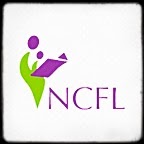Meeting up with several dozen aspiring and published writers was a real treat at Comic Con. And true to my word too, I told them to stop aspiring all together as soon as I had the opportunity. Writing isn't an isolated spectator sport. It's as active as your prose should be. Get out there and do it, every day.
Sure, there are some exceptions in history, but most professional writers — including panelists Genese Davis, Maxwell Alexander Drake, PJ Perez, and myself — all agree. And we aren't the only ones. Creative designer Sean Adams said as much last year. You have to be in it to win it, he said. Daily Monster designer Stephen Bucher said it as well, just a few months ago: Starting is harder.
You have get on with the business of doing. And if you can get on with this business every day — even those days you don't feel like it — then you slowly but surely train yourself to be the professional that you always wanted to be, even if you're surprised that it's not all about writing.
Five takeaways for writers that have little and everything to do with writing.
• Connect. While many aspiring writers think of writing as a solitary practice, professional writers see it as a sociable profession. Even those who are introverts at heart recognize the need to live life away from the keyboard and make it a point to meet new people to maximize opportunities that range from friendship and inspiration to collaboration and contract work. Many creative fields are surprisingly small professional niches where everyone knows everyone. Build a network.
• Diversify. When one of the panelists asked the room full of aspiring writers about their passion, almost all of them chose prose — writing fiction that may some day become a published book. The panel saw it differently, with Perez pointing out how commercial work had challenged him to become even more creative by adhering to different styles. I concurred, noting how writers can learn alliteration from poetry, dialogue from radio, and visualization from film.
• Learn. Professional writers never stop learning. In addition to enhancing writing skills (e.g., avoid passive voice), writers must continually immerse themselves in their genre, subject matter, fields and industries, financial affairs, and the publishing world. Classes, workshops, interviews and independent research are all part of the educational mix for most professional writers. Suffice to say that you can't write about what you don't know and you can't submit unless you know where to send it.
• Communicate. When one of the attendees asked how to know whether to accept or reject feedback, Drake suggested thinking of their work as two stories. There is the story in your head and there is the story you put on paper, he said. When your readers don't understand what you've written, you have to ask yourself whether or not what is in your head really made it on the paper. That said, Davis added that feedback is always appreciated as long as the author is able to remain true to their vision.
• Share. Nobody will ever discover your work if you keep it in a shoebox. Digital media makes it easier than ever to share samples, sections, or even scraps (as I call shorter-than-short stories on my Facebook fiction page) with an ever-increasing audience. But even if a writer doesn't want to share their work outright, they can always look for writers groups or other meet-ups where creative people get together. You never know when sharing your work will eventually come full circle.
Few jobs are as rewarding as those that allow you to share some creativity.
While I never intended to become a writer, I have always been a creative. And once you commit to being a creative, the rest of it will shape up nicely, depending mostly on your career path and a few surprise circumstances that you could never dream up when you started out.
It's true. You never really know until you do it. Maybe you will find a home in film or photography, design or the written word. Or maybe, if you are like me, you will discover you have some talent for all of it, even if one form of expression dominates most of my time than the others. The point is that how you share it will hardly matter as you are doing it, preferably every day. The panel all agreed.
With that, unless someone has some specific questions about becoming a writer, those five tips are among the best that could be pulled from our panel. That and, as always, good night and good luck.
Sure, there are some exceptions in history, but most professional writers — including panelists Genese Davis, Maxwell Alexander Drake, PJ Perez, and myself — all agree. And we aren't the only ones. Creative designer Sean Adams said as much last year. You have to be in it to win it, he said. Daily Monster designer Stephen Bucher said it as well, just a few months ago: Starting is harder.
You have get on with the business of doing. And if you can get on with this business every day — even those days you don't feel like it — then you slowly but surely train yourself to be the professional that you always wanted to be, even if you're surprised that it's not all about writing.
Five takeaways for writers that have little and everything to do with writing.
• Connect. While many aspiring writers think of writing as a solitary practice, professional writers see it as a sociable profession. Even those who are introverts at heart recognize the need to live life away from the keyboard and make it a point to meet new people to maximize opportunities that range from friendship and inspiration to collaboration and contract work. Many creative fields are surprisingly small professional niches where everyone knows everyone. Build a network.
• Diversify. When one of the panelists asked the room full of aspiring writers about their passion, almost all of them chose prose — writing fiction that may some day become a published book. The panel saw it differently, with Perez pointing out how commercial work had challenged him to become even more creative by adhering to different styles. I concurred, noting how writers can learn alliteration from poetry, dialogue from radio, and visualization from film.
• Learn. Professional writers never stop learning. In addition to enhancing writing skills (e.g., avoid passive voice), writers must continually immerse themselves in their genre, subject matter, fields and industries, financial affairs, and the publishing world. Classes, workshops, interviews and independent research are all part of the educational mix for most professional writers. Suffice to say that you can't write about what you don't know and you can't submit unless you know where to send it.
• Communicate. When one of the attendees asked how to know whether to accept or reject feedback, Drake suggested thinking of their work as two stories. There is the story in your head and there is the story you put on paper, he said. When your readers don't understand what you've written, you have to ask yourself whether or not what is in your head really made it on the paper. That said, Davis added that feedback is always appreciated as long as the author is able to remain true to their vision.
• Share. Nobody will ever discover your work if you keep it in a shoebox. Digital media makes it easier than ever to share samples, sections, or even scraps (as I call shorter-than-short stories on my Facebook fiction page) with an ever-increasing audience. But even if a writer doesn't want to share their work outright, they can always look for writers groups or other meet-ups where creative people get together. You never know when sharing your work will eventually come full circle.
Few jobs are as rewarding as those that allow you to share some creativity.
While I never intended to become a writer, I have always been a creative. And once you commit to being a creative, the rest of it will shape up nicely, depending mostly on your career path and a few surprise circumstances that you could never dream up when you started out.
It's true. You never really know until you do it. Maybe you will find a home in film or photography, design or the written word. Or maybe, if you are like me, you will discover you have some talent for all of it, even if one form of expression dominates most of my time than the others. The point is that how you share it will hardly matter as you are doing it, preferably every day. The panel all agreed.
With that, unless someone has some specific questions about becoming a writer, those five tips are among the best that could be pulled from our panel. That and, as always, good night and good luck.















































